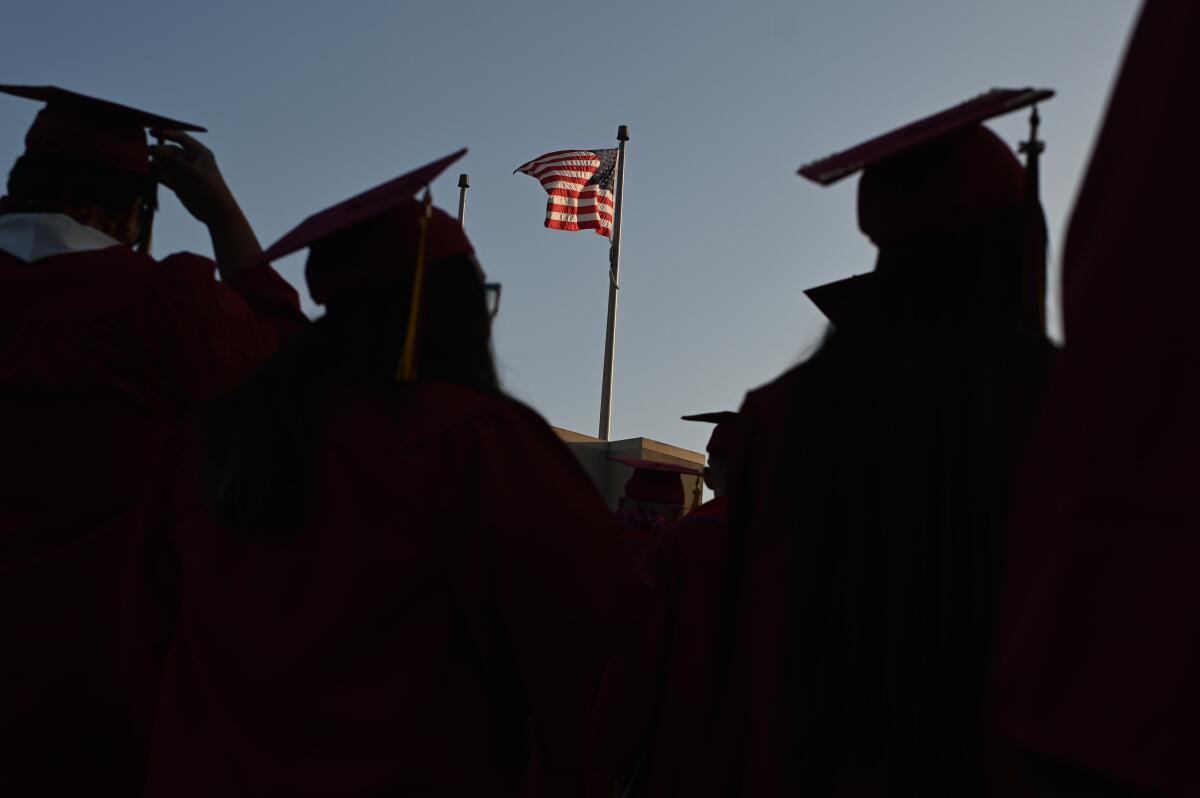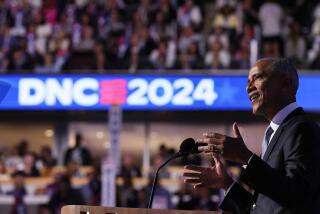Column: Biden’s ‘free’ community college sounds good, but he’s asking the wrong question

President Biden is expected to unveil his plan for free community college in his address to Congress on Wednesday. That may sound like a good solution to soaring college costs and the growing burden of student debt, but it’s an answer to the wrong question.
First, nothing about our education system is free and nothing will be. It’s a great campaign slogan but, ultimately, it’s political spin considering tax dollars are being used. It’s like a round of drinks on the house: Just because you’re not paying for the Jäger bombs doesn’t mean no one is.
Second, post-secondary education is not a luxury for the middle class, it’s access to it. In 2020, the median weekly income for those with a high school diploma was $781 while an associate degree brought in $938 and a bachelor’s $1,305.
Third, and most importantly, over the last 50 years, inflation has outpaced wages and the cost of college has outpaced them both. Graduating class after graduating class is drowning in debt before they even set sail because there’s a hole at the bottom of the ship.
Yes, the government should be removing barriers to post-secondary education; some 41% of community college students have to take out loans to get through school. But we should also be asking why it costs so much to go to college in the first place.
Between 1969 and 2019, the cost of college has increased a ridiculous 3,009%. The creation of federally funded Pell Grants by the Higher Education Act of 1965 was intended to help lower-income students pay for college, but clearly that hasn’t been sufficient.
When my son was born in 1996, the average cost of a four-year public university was $2,810 a year. By the time he graduated from high school in 2015, it was $9,430. When he graduated from college in 2019, it was $10,230 when it should have been $4,581, according to the U.S. Bureau of Labor Statistics inflation calculator. So, before Biden and the good folks in Washington dive into who should foot the bill, maybe they should spend more time investigating that $5,649 gap between what it is and what it should be.
The year my son graduated from college, the maximum Pell Grant covered about 25% of the average college cost; in the 1970s, the maximum grant covered about 67% of the average cost. That’s because the Pell Grants not only fell behind the rate of inflation, the program could not keep up with the skyrocketing costs of college.
This is why promising free community college right now is like bailing water out of a severely damaged boat. No one wants the ship to sink but it needs repair — not just bigger buckets — to keep it afloat. Even if programs like Pell Grants were expanded to make community college “free” for lower income people, what strategies would be put in place to ensure that costs could eventually be contained? Because if costs aren’t contained, we’ll end up right back with financial aid unable to keep up with the need.
We need more oversight on how colleges arrive at their fees, but I do not assume it’s all wasteful spending. Top administrative talent demands top compensation. A bad economy leads to cuts in state funding for public schools, which must be made up somehow. There are legitimate factors adding up to higher costs, such as increases in employee health benefits. And a good share of new costs can also be attributed to providing more services to students than were offered a generation ago.
Higher education, given its importance to raising the income of working families and the direction of the job market, should be viewed as social infrastructure (yes, just as the New Deal was about social and built infrastructure). That’s why its costs should be subject to the kind of close scrutiny that government applies to public utilities.
During the 2020 election, Biden published his post-secondary education plan with a great deal of focus on both affordability as well as its necessity. Quoting a Georgetown study, Biden pointed out that more than 60% of American jobs require some education beyond high school. That was a fact President Obama also noted when he unveiled his plan for free community college in 2015.
The two men are not wrong in their diagnosis or solution. But I believe too much of our governing philosophy relies on investing more resources in treatment than in prevention.
In this economy, Americans need higher education more than ever, but there are no controls to prevent college costs — at four-year and two-year institutions — from continuing to soar out of sight.
Yes, Biden and Congress should redirect tax dollars to make community college more accessible or “free,” if you prefer that language. But before taxpayers pick up the tab, shouldn’t we also find ways to prohibit the bar from jacking up the drink prices first?
@LZGranderson
More to Read
A cure for the common opinion
Get thought-provoking perspectives with our weekly newsletter.
You may occasionally receive promotional content from the Los Angeles Times.











